
Frequency bands (2G, 3G, 4G) used by operators, during the Mobile Network Benchmarking activity, are presented in Figure 1.
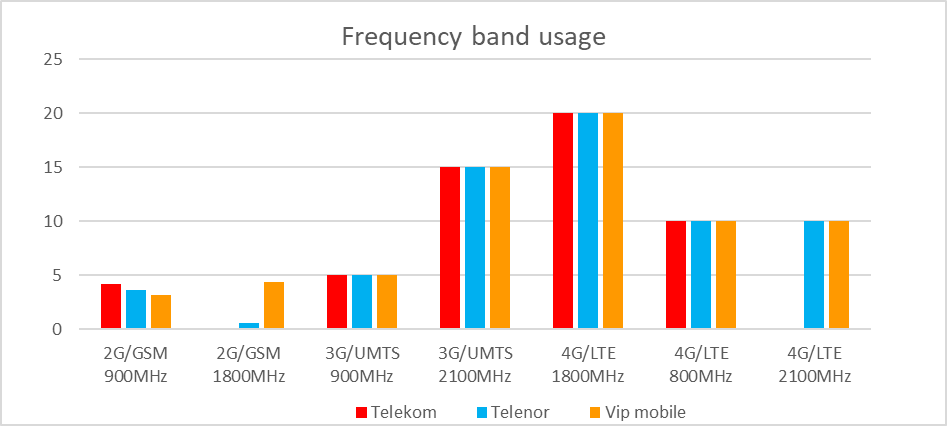
Fig. 1. Frequency bands used by operators
2G/GSM: All three operators used the 900 MHz band. The 1800 MHz band was used by Vip mobile and in a smaller extent by Telenor.
3G/UMTS: All three operators used the 2100 MHz band. The 900 MHz band was used by all three operators.
4G/LTE: All three operators used the 800 MHz and 1800 MHz bands, additionally 2100MHz was utilized by Telenor and Vip mobile, in particular spots. Telekom Srbija used both bands evenly in all aggregations, while Telenor and Vip mobile were using additional 2100MHz band. In Large Cities Telekom Srbija and Vip mobile were using LTE 30 MHz mainly, while Telenor used LTE 40 MHz. In Small Cities Vip mobile used LTE 40 MHz to the biggest extend. Vip mobile used LTE 40 MHz to some extend on Roads
Carrier Aggregation (CA) usage depends on the network configuration and the amount of data sent during the test. In Large Cities, Telenor had almost 90% usage of LTE CA, Telekom Srbija had over 85% and Vip mobile around 70% usage of LTE CA. In Small Cities, Vip mobile took the lead with over 83% of LTE CA, Telenor was second with 64% and Telekom was last with LTE CA usage of around 68%. On Roads the usage of LTE CA was much lower. Vip mobile used LTE CA to the highest extend 54%, Telenor and Telekom Srbija 37% and 29% respectively.
Charts with mobile coverage statistics, showing the distribution of radio signal levels for 2G/GSM, 3G/UMTS and 4G/LTE technologies, according to criteria defined by RATEL for the purpose of the Benchmarking campaign, are presented below in Figure 2:
| 2G/GSM signal level | 3G/UMTS signal level | 4G/LTE signal level | |
| Poor | L<-95dBm | L<-105dBm | L<-110dBm |
| Fair | -95dBm ≤ L < - 85dBm | -105dBm ≤ L < -95dBm | -110dBm ≤ L < -100dBm |
| Good | -85dBm ≤ L < -65dBm | -95dBm ≤ L < -65dBm | -100dBm ≤ L < -80dBm |
| Excellent | L ≥ -65dBm | L ≥ -65dBm | L ≥ -80dBm |
2G/GSM network coverage is presented in Figure 3
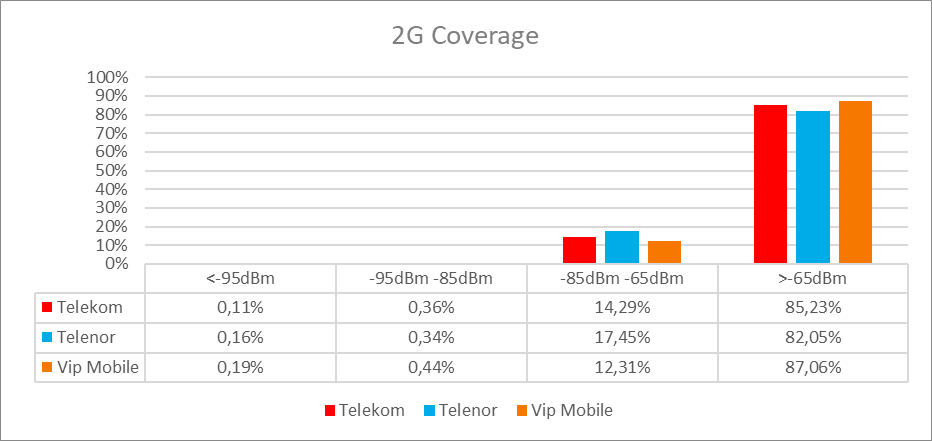
Fig. 3. 2G/GSM coverage
2G/GSM network coverage maps for all three mobile operators are shown in Figure 4.
Telekom Srbija
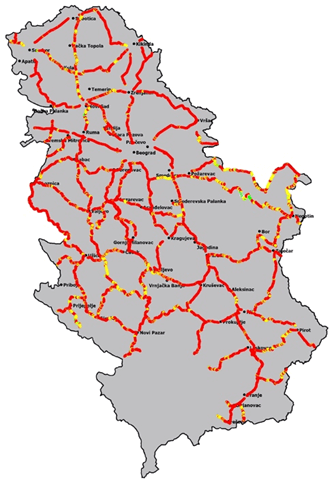
Telenor
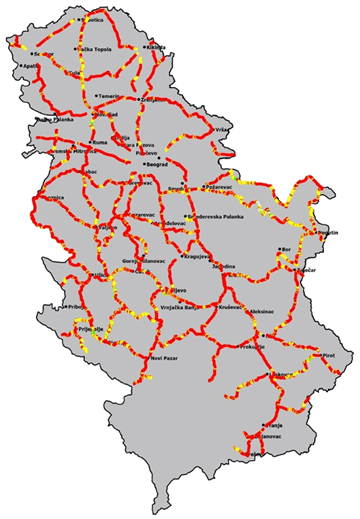
Vip mobile
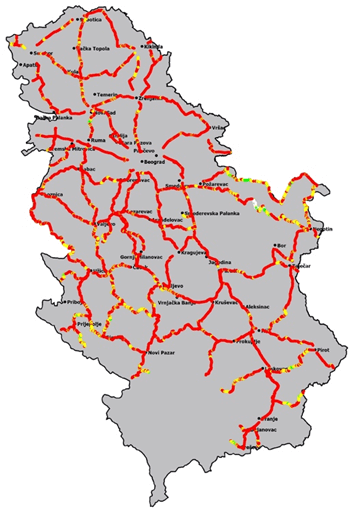
Fig. 4. 2G/GSM network coverage maps
The best coverage of 2G network was achieved by Vip mobile network. Telekom Srbija and Telenor had slightly worse 2G coverage and lower signal quality, comparing to Vip mobile network.
3G/UMTS network coverage is presented in Figure 5.
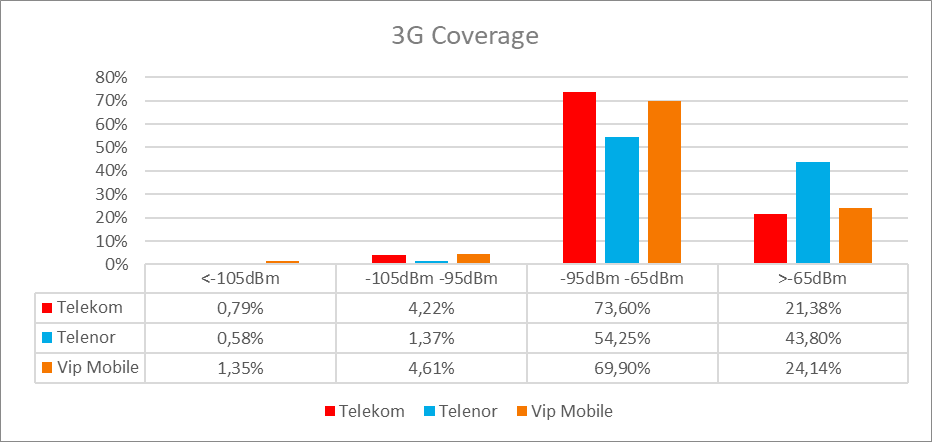
Fig. 5. 3G/UMTS coverage
3G/UMTS network coverage maps for all three mobile operators are shown in Figure 6.
Telekom Srbija
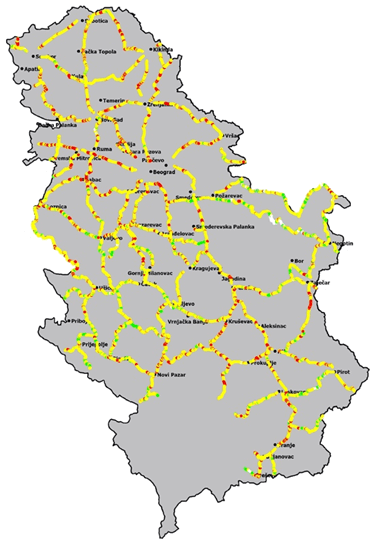
Telenor
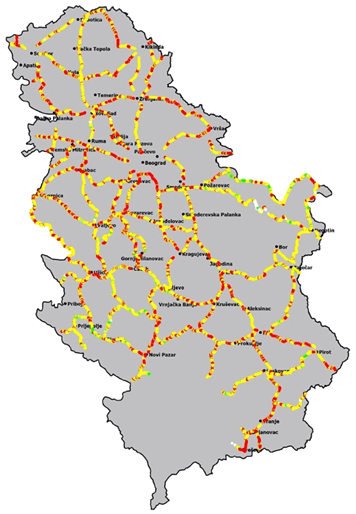
Vip mobile
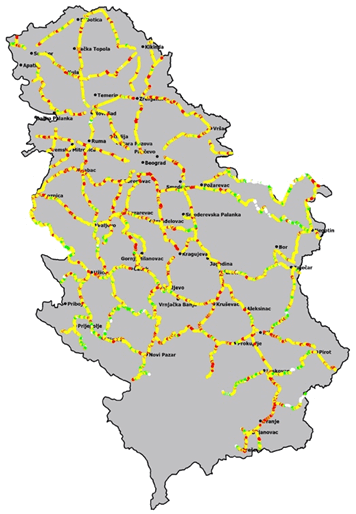
Fig.6. 3G/UMTS network coverage maps
The network with the best 3G coverage was Telenor. This result was caused by the widest UMTS 900 MHz footprint, with a well-developed UMTS 900 MHz coverage outside of cities. Telekom and Vip mobile network provided similar level of signal strength.
4G/LTE network coverage is presented in Figure 7.
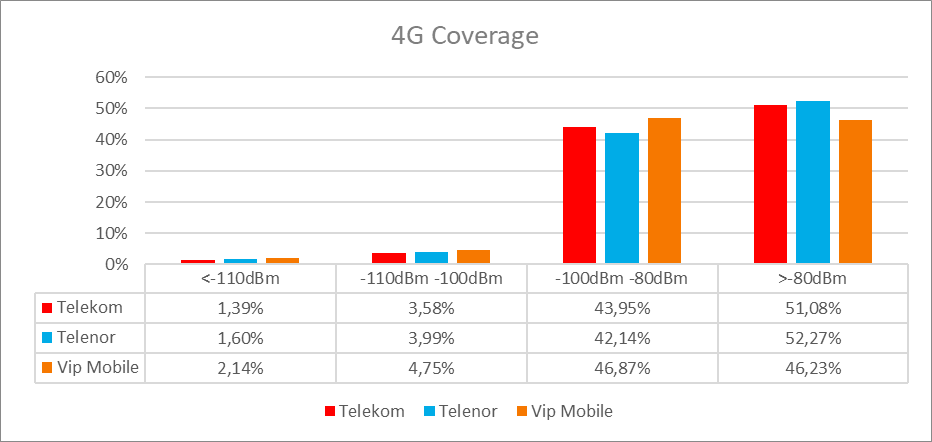
Fig. 7. 4G/LTE network coverage
4G/LTE network coverage maps for all three mobile operators are presented in Figure 8.
Telekom Srbija
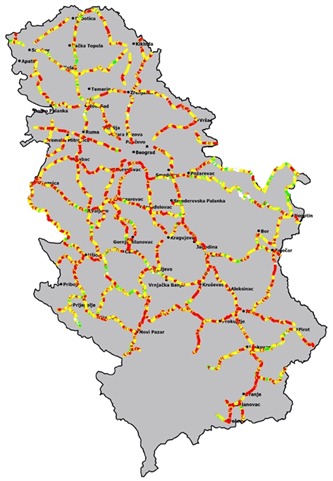
Telenor
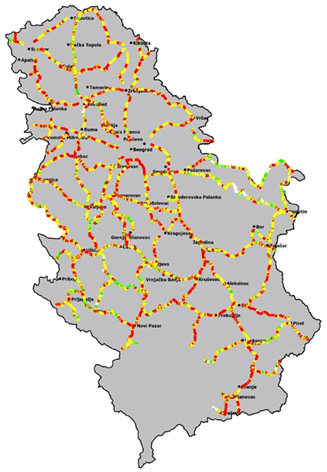
Vip mobile
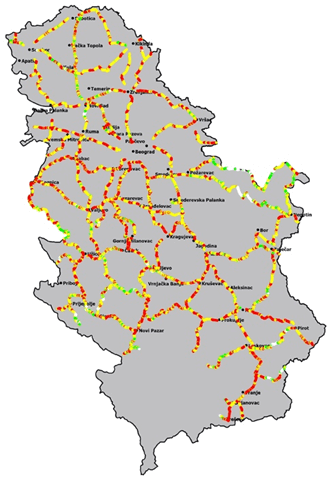
Fig. 8. 4G/LTE network coverage maps